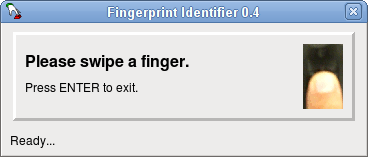

- #Backup gui tar linux command how to#
- #Backup gui tar linux command install#
- #Backup gui tar linux command archive#
- #Backup gui tar linux command full#
star.sh -i 2 -r /dev/sdb2 -b /dev/sdb1 -G /dev/sdb The new option here is -b, which sets the boot partition.
#Backup gui tar linux command how to#
The final example show how to run it in transfer mode ( 2). -r – defines targeted root (/) partition.-i – specifies operation mode ( 1 meaning restore mode).star.sh -i 1 -r /dev/sdb1 -G /dev/sdb -f /backups/ You can also restore a backup as in the following command. star.sh -i 0 -d /backups -c gzip -H -u "-warning=none" To exclude the /home in the backup, add the -H flag, and use gzip compression utility as shown. star.sh -i 0 -d /backups -c xz -u "-warning=none" -u – allows for reading additional tar/rsync options.-d – specifies destination directory, where the backup file will be stored.-i – specifies the operation mode( 0 meaning backup mode).
#Backup gui tar linux command archive#
Now run the following command to create a system backup file in /backups directory, the archive file will be compressed using the xz utility, where the flags are.
#Backup gui tar linux command install#
Install System Tar and Restore Linux System Backupįirst create a directory where your system backup files will be stored (you can actually use any other directory of your choice). Once all the required packages installed, now it’s time to download these scripts by cloning the system tar and restore repository to your system and run these scripts with root user privileges, otherwise, use the sudo command. # dnf install git tar rsync wget gptfdisk openssl

# yum install git tar rsync wget gptfdisk openssl $ sudo apt install git tar rsync wget gptfdisk openssl To install System Tar and Restore program, you need to first install all the required software packages as listed below.

How to Install System Tar and Restore Tool in Linux
#Backup gui tar linux command full#
There’s a full tutorial for Clonezila here. If you’re looking for a great hard drive backup solution similar to Gnome Disk Utility but with more options and settings for advanced users, check out this program. Or, if you prefer, Clonezilla can clone to raw. It can clone one drive directly to another. Once booted, Clonezilla can clone entire disks or even just partitions.

It’s a live disk utility that can be burned to a USB drive or optical media that you can boot from. ClonezillaĪ popular way to back up hard drives on Linux is by using Clonezilla. There’s a full tutorial on how to do this here.Īlso read: 4 Ways to Clone an Entire Hard Drive on Linux 2. IMG file), select where to save the backup and sit back.Īll and all, if you’re looking to make a complete backup of your hard drive on Linux and you’re not interested in fussing with live disks, command-line programs or anything like that, look no further. Backing up with the Disk Utility is very self-explanatory: select what hard drive you wish to back up (in the form of a raw. It’s a tool that comes with most Linux distributions that take advantage of Gnome’s desktop and software offering. Perhaps the most user-friendly way to back up a hard drive on Linux is to use the Gnome Disk Utility. With each list item there are different ways to back up. Here are four ways that you can back up the entire contents of a hard drive on Linux. Sometimes, however, you need to back up an entire hard drive.


 0 kommentar(er)
0 kommentar(er)
